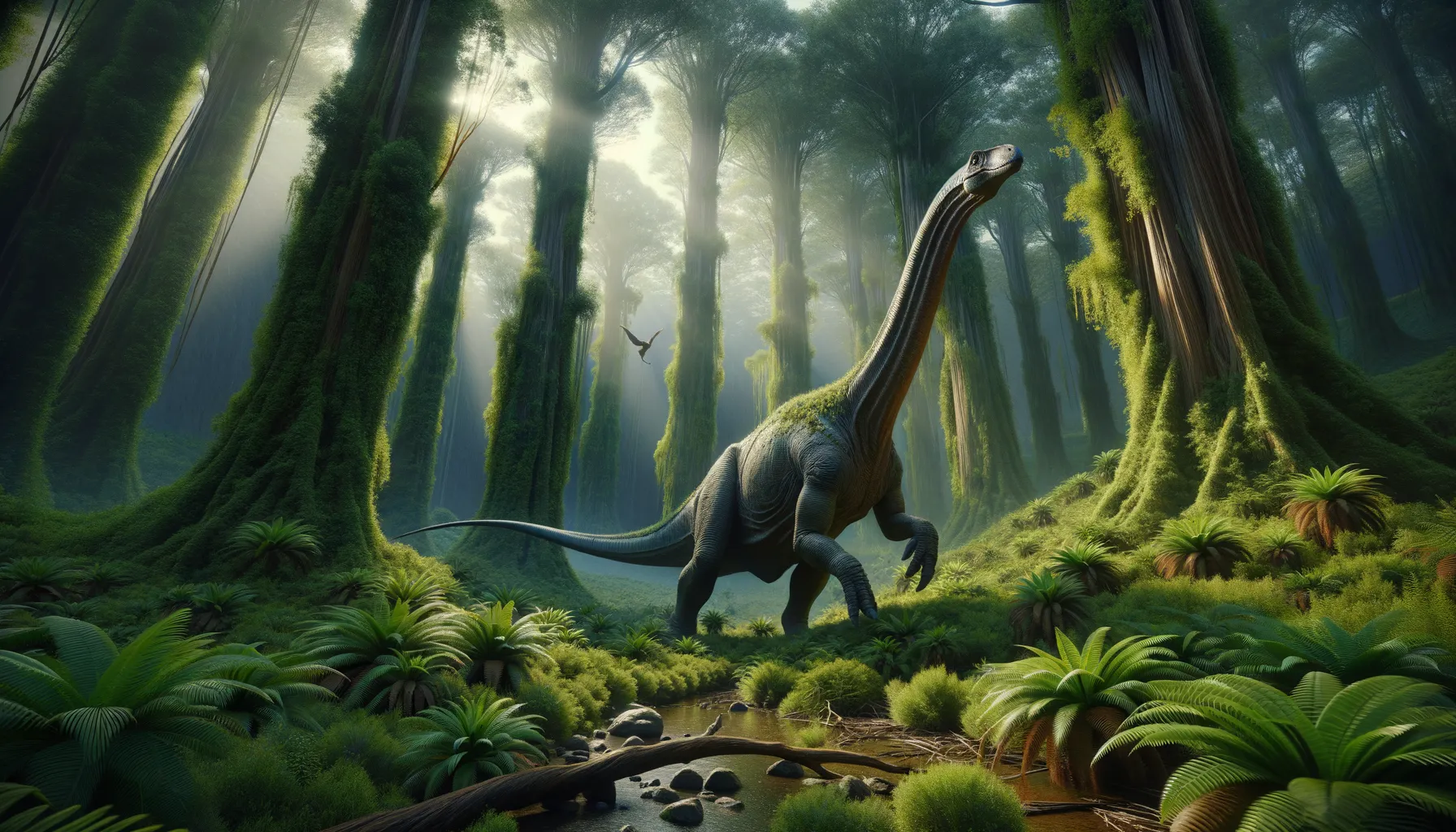
Rhoetosaurus
Giant of the Jurassic plains.
Period
Jurassic
Length
Roughly 15 meters long.
Height
Approximately 4 meters tall at the hips.
Weight
Around 20 to 25 tonnes.
Rhoetosaurus was a large, long-necked dinosaur that roamed the forests of Australia during the Jurassic period. Renowned for its impressive size, it was a sauropod known for substantial weight and length, moving in herds for protection and social interaction. Despite its grandeur, Rhoetosaurus was a herbivore, feeding primarily on vegetation available at various heights due to its elongated neck.
Diet
Rhoetosaurus was a herbivore, primarily consuming plants. It likely ate leaves from tall trees and shrubs, reaching high vegetation with its long neck.
Hunting
Being a herbivore, Rhoetosaurus did not hunt for food. Instead, it foraged for plant-based sustenance, grazing in forested areas.
Environmental challenges
Rhoetosaurus faced the challenge of finding sufficient food to sustain its large size, especially during droughts or other periods of scarcity. Predators would have been a constant threat, particularly to younger or injured individuals. Changes in the environment, such as shifts in climate or vegetation patterns, could impact their habitat and food availability.
Speed
Likely slow due to its massive size.
Lifespan
Estimated to live several decades.
First discovery
First discovered in Queensland, Australia in 1924.
Fun Facts
- Rhoetosaurus was a long-necked dinosaur that lived about 160 million years ago.
- Its fossils were first discovered in Queensland, Australia, in the 1920s.
- Rhoetosaurus is one of the earliest known sauropods from the Middle Jurassic period.
- This dinosaur could grow up to around 15 meters (50 feet) long, quite impressive for its time.
- Rhoetosaurus' name means 'Rhoetos lizard,' named after Rhoetus, a figure from Greek mythology.
- It was a herbivore, feasting on plants, using its long neck to reach high vegetation.
- Rhoetosaurus walked on four legs and had a relatively slender body compared to later sauropods.
Growth and Development
Rhoetosaurus, like other sauropods, grew rapidly after hatching, reaching a large size to defend against predators. It took several years to reach full maturity, during which it would have been highly vulnerable. Adult Rhoetosaurus maintained their massive stature through consistent grazing and foraging.
Habitat
Rhoetosaurus inhabited lush, forested regions with abundant plants and water. Their environment would have been humid and rich in vegetation, providing ample resources for its herbivorous diet. These regions lay in parts of prehistoric Australia, offering suitable cover and food sources for survival.
Interaction with other species
Rhoetosaurus likely shared its environment with other herbivores and a variety of carnivorous dinosaurs. Its large size may have deterred some predators, though young or sick individuals would have been at risk. It likely coexisted peacefully with herbivorous contemporaries, competing mainly for food resources.
Natural lifespan
Rhoetosaurus could live up to several decades given its size and herbivorous nature.
Reproduction
Rhoetosaurus likely laid eggs in nests, which would have been attended communally or left to develop without adult supervision. Hatchlings would need to grow rapidly to increase their chances of survival. Parental care, if any, was likely minimal, with juveniles joining herds shortly after hatching.
Social behaviour
Rhoetosaurus is believed to have been social, living in herds for protection against predators and facilitating breeding. Herd life would have enabled better resource location and shared care of young. It relied on these social groups for survival throughout its lifespan.
Fossil locations
Fossils of Rhoetosaurus have been primarily found in Queensland, Australia, reflecting its historical presence in that region. These fossils have helped paleontologists understand its structure and behavior, contributing valuable information to the study of Australian dinosaurs.
